When Less is More: An Introduction to Minimalist Website Design
April 2012
By Sufyan bin Uzayr
Minimalism is a trend that garners a lot of debate and discussion in the website design community. As a result, chances are good that you’ve heard of minimalist design and seen its principles in practice on sites that you visit day in and day out.
But what exactly
is minimalist design? And is it the right choice for your site?
Minimalism defined
In website design, minimalism can easily be construed as plain, lackluster or easy to accomplish. However, that is quite far from the truth.
To the contrary, minimalism is a philosophy of web design that strives to eliminate all unessential features and elements in order to enhance usability by providing a clean, streamlined browsing experience that is absent of unnecessary distractions and clutter.
Focus
Every successful minimalist design starts with a crystal-clear vision of the purpose of the site and the key messages it needs to convey.
Before any design choices are made, it’s critical to outline the goals and content of the site. This requires determining what information is most vital to visitors and arranging it in order of significance. You might actually be amazed to discover how little information is actually required to help users make decisions or accomplish their goals.
Typography
Because minimalist design is reduced to only its most essential visual elements, the site’s content takes center stage. As a result, typography is key to capturing the user’s attention.
The choice and usage of typefaces in minimal design is critical to creating a unique look and feel that makes a lasting impression on visitors. Therefore, it’s important to choose a combination of typefaces that both reflect the personality of the brand and provide a clean, pleasurable user experience. Yet again, restraint is key, as using too many different fonts can make the site feel unorganized and chaotic.
Beyond the choice of typeface, attention to detail in size, color, spacing and weight is important to ensuring readability and defining the overall aesthetic of the site.
The WPShower website offers a good example of the role typography plays in setting the tone for minimalist design, with an easy-to-read yet somber font for the main caption and a quiet font for the menus.
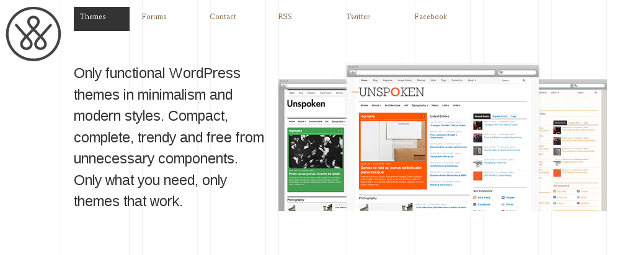
Color
A common myth of minimalism in website design is that it entails a lack of color. While many minimalist websites do feature a color palette that is limited to black and white, this is merely an aesthetic choice, not a requirement. Instead, just as with all other elements of minimalist design, color should be deployed in ways that emphasize focus and restraint.
Minimalist sites commonly employ a single continuous background color that sets the mood or tone for the site. A carefully chosen accent color is then employed to draw the user’s attention to key features of the site, such as navigational elements or important points within the content. It’s important to ensure that the accent color is not used to excess, or else it will lose its impact.
For instance, take a look at authentic style, the design portfolio of William Smith. The background is brown, with another shade of that very color used as accent, yielding an overall effect that is minimal, clean and neat.
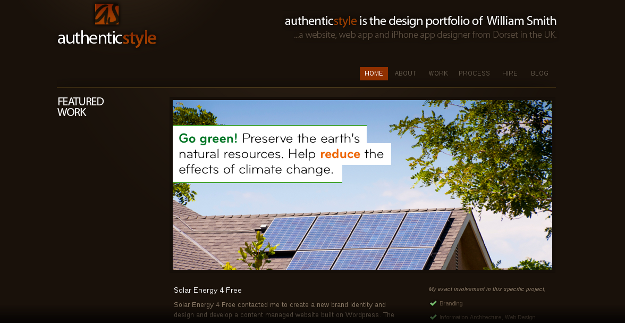
Layout
Layout is a make-or-break element of minimalist design. It requires proper execution and an absolute lack of ambiguity. All elements should work together to keep the primary focus on the site’s content.
Minimalist design requires special attention to certain key elements. For example, the company name and logo should be in a prominent location in order to establish the site’s identity and promote the brand.
Next, as with any site, ease of navigation is critical. Navigation menus should be convenient to locate and use on any device or platform. If visitors are forced to scavenge for information, the website will not be popular, no matter how beautiful it is.
For instance, take a look at the website of The Mavenist – a minimalist design featuring awesome typography and a user-friendly layout.
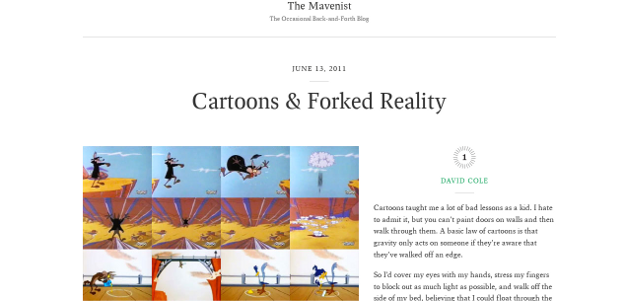
Also, it is often incorrectly assumed that a minimal website design excludes images and graphics. After all, we are concentrating on good typography, few colors and highly structured layouts, so images will only introduce chaos, right?
Actually, no. Images are an important component of any website’s content, and in minimalist design, images can be used to powerful effect in the absence of other competing graphical elements.
For example, take a look at the Clean Dessign theme. It is loaded with images and yet maintains restraint in terms of layout and design.
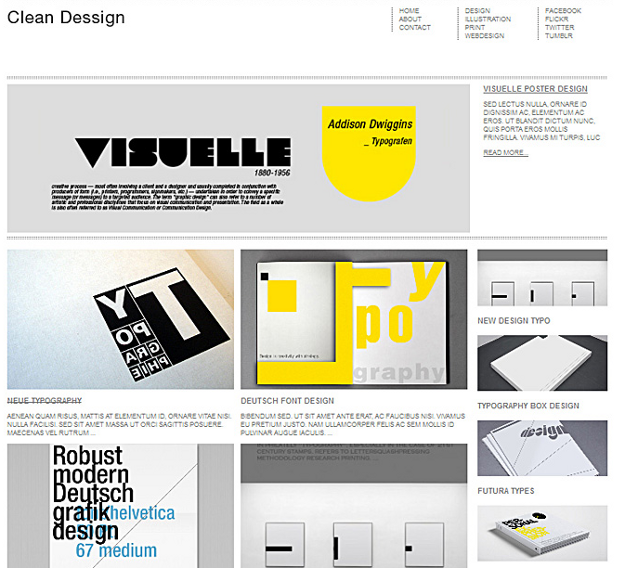
White space
White space – also known as “negative space” – simply refers to the area on a web page that is not occupied by any design elements or text. Even though it is called “white space,” it does not actually have to be white. This term merely refers to the space that exists between content.
White space is a critical element of any design – not just minimalism. It can be tempting to fill this empty space in order to make the best use of the available real estate on the page. However, in fact, it is this space between content that helps users make sense of the page and understand which elements are most important.
In minimalist design, white space is used to help lead and direct the user’s attention. For example, content that stands alone will draw focus immediately. Furthermore, white space can also be used to group similar items together as well as to create separation and differentiate between elements of various levels of importance.
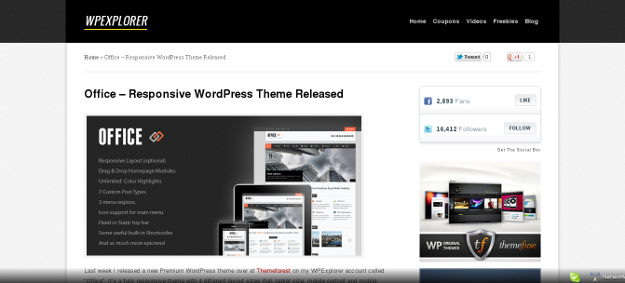
Getting started with minimalist design
While minimalist design is appealing in its simplicity, it’s not the right choice for every site. It works best for those sites that are centered around serving a singular purpose – whether that’s selling an app or presenting a portfolio of work.
So how can you determine whether your site would benefit from being redesigned with a minimalist approach?
The answer is more simple than you might think. No matter what business you’re in, your website exists to help that business grow. Therefore, every decision you make with regard to your site should be based on whether it will help to advance your business growth objectives.
A good place to start is by evaluating your current website. Make a list of its various features and components. Now arrange that list in order of usage, with the most commonly used ones on top. From there, go down the list and eliminate any that are not often used or are not essential to supporting the business objectives of your site.
If what remains on the list reflects a few relatively simple ideas and functions, your site could be a good candidate for a minimalist redesign. Further exploration with an experienced website design firm will help you identify the ways that your site could be simplified and streamlined.
As always, usability trumps all, so any changes must be driven by the goal of providing the best possible experience for visitors that motivates them to take action. Implementing minimalism just because it is a popular trend could ultimately undermine your site’s ability to help you capture and convert new customers. But if your aim is to present a focused message in a powerful way, minimalist design will provide a stage where those ideas can shine.
Sufyan bin Uzayr is a freelance writer, artist and photographer based in India. He serves as Editor-in-Chief for the e-journal Brave New World and also writes for several technology blogs and print magazines. His primary areas of interest include open source, mobile development, web CMS and vector art. You can visit his website or friend him on Facebook and Google+.